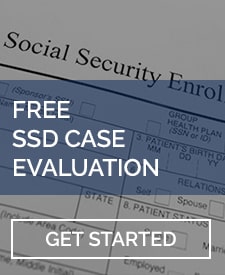Introduction: Navigating the Complexities of TBI and SSD Benefits
When it comes to understanding the profound impact of a traumatic brain injury (TBI), it’s crucial to delve into not just the medical aspects, but also the financial and legal implications. One of the most pressing questions for TBI victims and their families often revolves around “how much disability do you get for TBI?” This is especially pertinent when exploring eligibility for Social Security Disability (SSD) benefits.
Traumatic brain injuries, often the result of severe external forces like head impacts or vehicular accidents, vary in severity and symptoms. These can range from confusion and blurred vision to more severe cases of cognitive and physical impairments. For those grappling with the consequences of TBI, understanding “how much disability you get for TBI” is not just a question—it’s a journey into adapting to a new reality.
This article aims to guide TBI victims through the complex process of SSD benefit approval, highlighting key considerations such as substantial gainful activity, severity of the condition, and meeting SSA impairment listings. Each section is dedicated to unfolding various aspects of TBI, from understanding its long-term effects to navigating the legal and financial intricacies. We will explore essential steps like documenting your condition, applying for SSD benefits, and what to expect after approval. In each segment, we’ll revisit the pivotal query: “how much disability do you get for TBI?” and provide insights to empower victims and their families.
Whether it’s decoding the SSD eligibility criteria, understanding the role of medical assessments, or preparing for the periodic reviews by the SSA, our focus remains steadfast on helping you comprehend “how much disability you get for TBI.” This comprehensive guide is designed to provide clarity, offer support, and help TBI survivors navigate the challenging path of securing the benefits they rightfully deserve.

Classifying the Severity of TBIs
The severity of a TBI is categorized based on the extent of brain damage. Concussions, as a mild form of TBI, typically result in short-lived symptoms. However, severe TBIs can lead to lasting physical and mental impairments, and in extreme cases, permanent brain damage or death. It’s vital for victims and their families to know how much disability you get for TBI in these varying scenarios for adequate support and compensation.
Diagnostic Processes for TBI
Diagnosing a TBI involves a range of tests, such as the Glasgow coma scale, neuropsychological assessments, and brain imaging techniques like CT scans and MRIs. These diagnostic tools are instrumental in determining the injury’s severity, which directly influences how much disability you get for TBI.
TBI Symptoms and Their Impact
TBI symptoms can vary greatly, from mild, such as temporary headaches and dizziness, to severe, like prolonged unconsciousness or amnesia. Understanding the extent and impact of these symptoms is crucial in assessing how much disability you get for TBI. This information helps in tailoring treatment plans and seeking appropriate compensation.
Long-Term Consequences of TBI
The long-term effects of a TBI can include physical, cognitive, and emotional changes, which can significantly affect an individual’s quality of life and ability to work. Therefore, it is essential for those affected to understand how much disability you get for TBI. This knowledge is crucial for financial planning and accessing necessary support services.
Financial Implications of TBI
Dealing with a TBI involves considerable financial burdens, including medical expenses, lost wages, and long-term care costs. For many, understanding how much disability you get for TBI is a key concern, as it directly impacts the ability to manage these financial challenges.
Legal Considerations in TBI Cases
In cases of TBI, legal considerations often include compensation for damages and disability benefits. For victims seeking justice and support, knowing how much disability you get for TBI is fundamental in legal proceedings. This knowledge ensures that they receive fair and adequate compensation for their injuries.
The Role of Rehabilitation in TBI Recovery
Rehabilitation plays a crucial role in the recovery process from a TBI. It involves various therapies aimed at restoring function and helping individuals adapt to changes in their abilities. Understanding how much disability you get for TBI can influence the extent and type of rehabilitation services that can be accessed.
Support Systems for TBI Survivors
Support systems, including family, community resources, and professional services, are essential for TBI survivors. They provide the necessary emotional, physical, and financial support. Awareness of how much disability you get for TBI is important in mobilizing these support systems effectively.
Navigating Social Security Disability (SSD) for TBI Victims
Experiencing a traumatic brain injury (TBI) can profoundly affect your ability to work, potentially making you eligible for Social Security Disability (SSD) benefits. These benefits are designed for individuals whose work capacity is significantly limited by severe physical or mental conditions. Understanding how much disability you get for TBI is crucial in these circumstances.

SSD Eligibility Criteria
To qualify for SSD, you must demonstrate a substantial limitation in your work capacity and meet the Social Security Administration’s (SSA) disability criteria. This includes conditions that severely impact your work abilities for at least 12 months or are expected to result in death. Determining how much disability you get for TBI involves assessing these eligibility criteria carefully.
Applying for SSD Benefits
The process of applying for SSD benefits includes submitting an online application, contacting the national SSD hotline, or visiting local SSD offices. While not mandatory, legal representation is recommended due to the complexities involved in disability determinations. It’s important to understand how much disability you get for TBI to navigate this process effectively.
Documentation and Evidence for SSD
Gathering the right documentation and evidence is a key step in the SSD application process. Medical records, doctor’s statements, and proof of work limitations are crucial in establishing your claim. Knowing how much disability you get for TBI is dependent on presenting a strong case to the SSA.
The Role of Medical Assessments in SSD Applications
Medical assessments play a pivotal role in determining SSD eligibility for TBI victims. These evaluations help establish the severity of the injury and its impact on work abilities. Accurately assessing how much disability you get for TBI hinges on these medical findings.
Understanding SSD Benefit Amounts
Understanding how much disability you get for TBI is essential for financial planning. SSD benefit amounts vary based on your previous earnings and the severity of your disability. Getting a clear picture of how much disability you get for TBI can help in managing your financial future.
Navigating the SSD Appeals Process
If your SSD application is initially denied, there is an appeals process. This can be a complex journey, where understanding how much disability you get for TBI is vital. An appeal gives you another opportunity to present your case and secure the benefits you deserve.
The Importance of Legal Assistance
Seeking legal assistance can be beneficial in navigating the SSD process for TBI. An experienced Social Security Disability Attorney can help articulate how much disability you get for TBI and guide you through the application or appeals process, improving the chances of a favorable outcome.
Key Considerations in SSD Benefit Approval for TBI
For victims of traumatic brain injury (TBI), comprehending the Social Security Disability (SSD) benefit approval process is essential. This process includes evaluating substantial gainful activity, the severity of the condition, and compliance with specific Social Security Administration (SSA) impairment listings. Understanding how much disability you get for TBI is pivotal in navigating this journey.
Determining Substantial Gainful Activity and Severity
The SSA’s assessment of your work capacity plays a crucial role in determining eligibility for disability benefits. If your work level is minimal due to your TBI, you may qualify for benefits. The severity assessment particularly scrutinizes how your TBI affects your work capabilities. Knowing how much disability you get for TBI is essential in this step, as it influences the outcome of your application.
Meeting SSA Impairment Listings for TBI
For TBI sufferers, the SSA evaluates conditions under listing 11.18. This listing requires evidence of significant motor function disruption or substantial limitations in cognitive and interactive skills. Successfully meeting these criteria is a key factor in determining how much disability you get for TBI.
The Role of Medical Documentation in SSD Applications
In the SSD application process for TBI, providing comprehensive medical documentation is crucial. This documentation should highlight the extent of the brain injury and its impact on daily functioning. Accurate and detailed medical records aid in determining how much disability you get for TBI.
Understanding the Impact of TBI on Daily Life
To successfully navigate the SSD benefits application, it’s important to articulate how TBI affects your daily life. This includes detailing the challenges in personal and professional settings. Clarifying these impacts is vital to establish how much disability you get for TBI.
The Importance of Consistent Medical Evaluation
Consistent medical evaluation and follow-up are essential for TBI victims applying for SSD benefits. Regular check-ups and treatment updates provide SSA with current information on your condition, influencing how much disability you get for TBI.
Navigating the Appeals Process
If your initial SSD application is denied, understanding the appeals process is crucial. During the appeal, re-emphasizing the extent of your TBI and its impact on your ability to work can help clarify how much disability you get for TBI.
Seeking Expert Guidance
Navigating the SSD benefits application process for TBI can be complex. Seeking advice from medical and legal experts can provide clarity and support in determining how much disability you get for TBI.
What to Expect After SSD Approval for TBI
Once you receive Social Security Disability (SSD) approval for a traumatic brain injury (TBI), it’s important to understand that your case is not permanently resolved. The SSA conducts periodic reviews of your condition. Continual medical treatment and documentation are crucial to maintain your SSD benefits and understand how much disability you get for TBI.
Periodic Reviews by the SSA
After SSD approval for TBI, the Social Security Administration (SSA) will periodically review your case to ensure that your disability status remains unchanged. These reviews are a standard part of the process, and their frequency can vary based on the expected duration of your disability. Knowing how much disability you get for TBI is dependent on the outcome of these reviews.
The Importance of Ongoing Medical Treatment
Maintaining consistent medical treatment is vital after SSD approval for TBI. Regular visits to healthcare professionals not only aid in your recovery but also provide essential documentation for the SSA reviews. This documentation is key to determining how much disability you get for TBI during these periodic assessments.
Keeping Detailed Medical Records
Keeping detailed records of your medical treatments, doctor visits, and progress is important. These records play a significant role in the SSA’s review process and impact how much disability you get for TBI. Accurate and up-to-date medical information is essential for sustaining your SSD benefits.
Understanding Benefit Adjustments
It’s crucial to understand that the amount of disability benefits you receive for TBI can be adjusted based on changes in your condition or financial situation. Staying informed about how much disability you get for TBI helps in managing your finances and anticipating any potential adjustments.
Preparing for SSA Reviews
Preparing for SSA reviews involves gathering all relevant medical information and potentially seeking guidance from a disability attorney. This preparation is critical to ensure that you continue receiving the correct amount of disability for TBI.
The Role of Healthcare Providers in SSD Reviews
Your healthcare providers play a pivotal role in the SSD review process for TBI. They provide necessary medical evidence and assessments that the SSA uses to determine how much disability you get for TBI. Maintaining a good relationship with your healthcare team is therefore essential.
Impact of Improved Health on SSD Benefits
If your health improves significantly, it might affect how much disability you get for TBI. The SSA may adjust your benefits accordingly, making it important to keep them informed about any major changes in your condition.
Navigating Changes in Disability Status
Changes in your disability status can be challenging to navigate. Understanding how these changes affect how much disability you get for TBI is key to managing your benefits effectively and planning for the future.
Conclusion: Empowering TBI Survivors with Knowledge and Guidance
In conclusion, understanding “how much disability you get for TBI” is not just about quantifying a benefit amount. It’s about comprehending the full scope of challenges and opportunities that arise from living with a traumatic brain injury. Throughout this article, we’ve explored various facets of TBI, from the initial diagnosis and classification of severity to navigating the complex Social Security Disability (SSD) process.
The journey of a TBI survivor is marked by numerous hurdles, but with the right information and support, these challenges can be navigated successfully. A key part of this journey is understanding “how much disability you get for TBI.” This knowledge is crucial in making informed decisions about medical care, legal representation, and financial planning.
It’s important for TBI victims and their families to remember that each case is unique, and so the answer to “how much disability you get for TBI” varies. However, by staying informed, seeking expert guidance, and being proactive in your SSD application and reviews, you can maximize your chances of receiving the benefits you deserve.
Ultimately, the question of “how much disability you get for TBI” underscores the importance of advocacy and support for those affected by traumatic brain injuries. Whether it’s through navigating SSD benefits, understanding legal rights, or accessing rehabilitation services, the goal remains the same: to empower TBI survivors with the resources they need to lead fulfilling lives.
We hope this article has provided valuable insights into the complexities of TBI and SSD, and has offered guidance on the pivotal question: “how much disability you get for TBI.” Remember, you are not alone in this journey, and with the right support, you can navigate the path to recovery and compensation.
Frequently Asked Questions About How Much Disability Do You Get For TBI
What Determines How Much Disability You Get for TBI?
The amount of disability you receive for a traumatic brain injury (TBI) is determined by several factors, including the severity of your injury, how it affects your ability to work, and your previous work history. Understanding how much disability you get for TBI requires a thorough evaluation of your specific case by the Social Security Administration (SSA) based on these criteria.
How Does TBI Severity Affect SSD Benefits?
The severity of a TBI significantly impacts the Social Security Disability (SSD) benefits you can receive. Mild TBIs might result in shorter-term benefits, while severe TBIs could qualify for more substantial, long-term support. Accurately assessing the severity is essential in understanding how much disability you get for TBI.
Can Medical Assessments Influence How Much Disability You Get for TBI?
Yes, medical assessments play a critical role in determining how much disability you get for TBI. These evaluations provide the SSA with crucial information about the extent of your injury and its impact on your daily life and work abilities, influencing the benefit amount you may receive.
What Should You Do if Denied SSD Benefits for TBI?
If you are denied SSD benefits for a TBI, it’s important to consider the appeals process. Understanding how much disability you get for TBI and presenting a strong case during the appeal, potentially with legal assistance, can improve your chances of securing the benefits you deserve.




